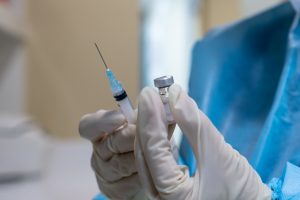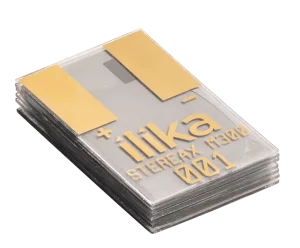Indivior PLC (LON: INDV) today announced that data from its pivotal phase 3 clinical trial evaluating the efficacy, safety and tolerability of SUBLOCADETM (buprenorphine extended-release) injection for subcutaneous use (CIII), were published by The Lancet. The 24-week trial met its primary and key secondary endpoints for both the 300/300 mg and 300/100 mg dosage regimens of SUBLOCADE, which demonstrated clinically and statistically significant differences in percentage abstinence from opioid use based on negative urine samples and self-reports of illicit drug use as well as treatment success defined as participants with ≥80% opioid abstinence during weeks 5-24, compared to placebo1.
“Findings show that SUBLOCADE administered by healthcare providers delivered sustained buprenorphine exposure for the entire monthly period while increasing abstinence rates and controlling craving and withdrawal symptoms for patients in this pivotal trial, compared to placebo. This represents an effective option in the treatment of opioid use disorder,” said Christian Heidbreder, Ph.D., Chief Scientific Officer of Indivior. “We are proud of the potential impact that these data represent for patients on their path to recovery from opioid use disorder and our continuing efforts to partner with the treatment community.”
The manuscript, published on February 18, 2019 in The Lancet, is titled “Efficacy and safety of a monthly buprenorphine depot injection for opioid use disorder: a multicentre, randomised, double-blind, placebo-controlled, phase 3 trial.” This phase 3 study served as one of the key studies from the clinical development program that supported the U.S. Food and Drug Administration (FDA) approval of SUBLOCADE in November 2017.
“Opioid use disorder is a chronic condition, with many barriers to recovery, including withdrawal symptoms, cravings and potential for relapse,” said Walter Ling, M.D., Professor Emeritus of Psychiatry and Founding Director of the Integrated Substance Abuse Programs (ISAP), University of California, Los Angeles. “These data show SUBLOCADE can be effective in maintaining control of some barriers, making it an important treatment option for patients with moderate to severe opioid use disorder.”
In the phase 3 trial, a total of 504 treatment-seeking adults with moderate or severe OUD were randomised to monthly SUBLOCADE 300/300 mg (6×300 mg injections), SUBLOCADE 300/100 mg (2×300 mg injections + 4×100 mg injections) or placebo (6× placebo injections) for 24 weeks and received weekly individual drug counselling1. No supplemental buprenorphine was allowed1. Withdrawal and craving symptoms were partially clinically controlled with buprenorphine/naloxone sublingual film prior to the first injection of SUBLOCADE1. The primary efficacy endpoint was percentage abstinence from opioid use, based on negative urine samples and self-reports of illicit drug use at Weeks 5-241. The key secondary efficacy endpoint was treatment success, as defined by participants with ≥80% opioid abstinence during weeks 5-241. Other secondary efficacy endpoints included opioid craving and withdrawal1.
The results showed that SUBLOCADE met the primary efficacy endpoint, with both dosage regimens demonstrating mean percentage abstinence rates significantly higher than those of the placebo group (300/300 mg: 41.3% and 300/100 mg: 42.7% compared with 5.0% for placebo, P<0.0001)1. Both SUBLOCADE dosage regimens also met the key secondary endpoint for treatment success (300/300 mg: 29.1%; 300/100 mg: 28.4%; placebo: 2.0%, P<0.0001)1. In addition, mean withdrawal and craving scores in both SUBLOCADE groups remained relatively constant and were consistently lower than those observed in the placebo group1. Retention was nearly twice as high with SUBLOCADE compared to placebo, and no compensatory non-opioid drug use (e.g., amphetamine and methamphetamine, barbiturates, benzodiazepines, cocaine, cannabinoids and phencyclidine) was observed during SUBLOCADE treatment1. Furthermore, increased medication satisfaction was found among participants treated with SUBLOCADE compared to placebo1.
This is the first published study to translate the original observations which suggested that ≥70%-80% brain mu-opioid receptor occupancy associated with buprenorphine plasma concentrations of ≥2-3 ng/mL is required to block subjective drug-liking of exogenous opioid, into statistically significant clinical efficacy1.
The safety profile of SUBLOCADE was consistent with other buprenorphine products for OUD treatment except for injection-site reactions, which were mostly mild and not treatment-limiting1. The most common adverse events were headache, constipation, nausea and injection-site pruritus1.











































